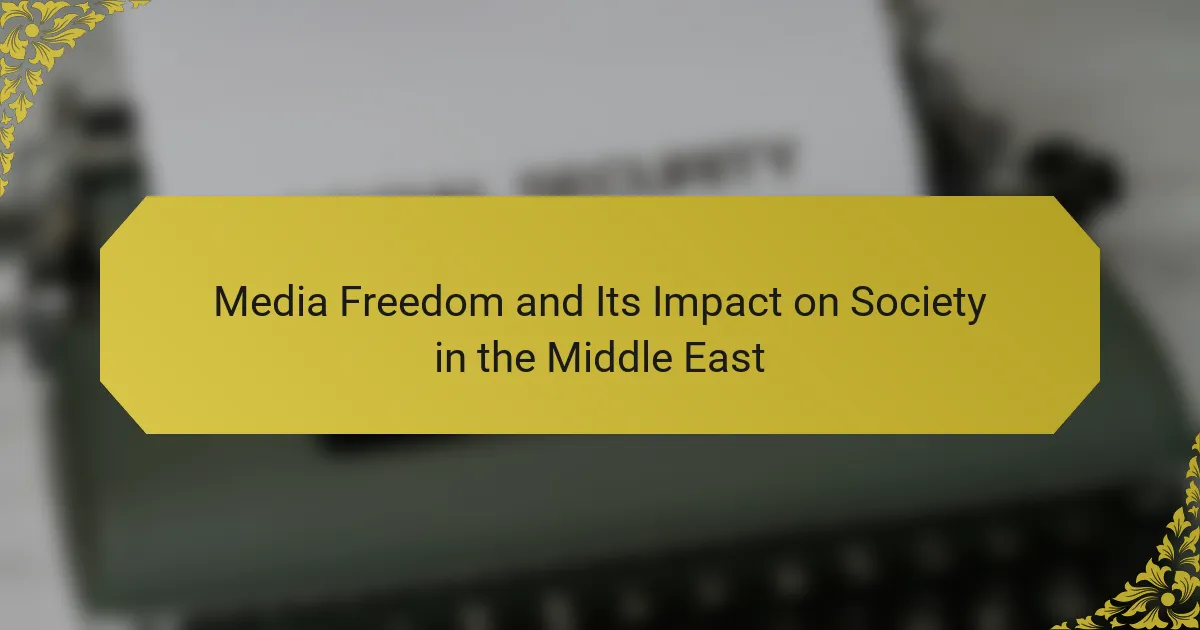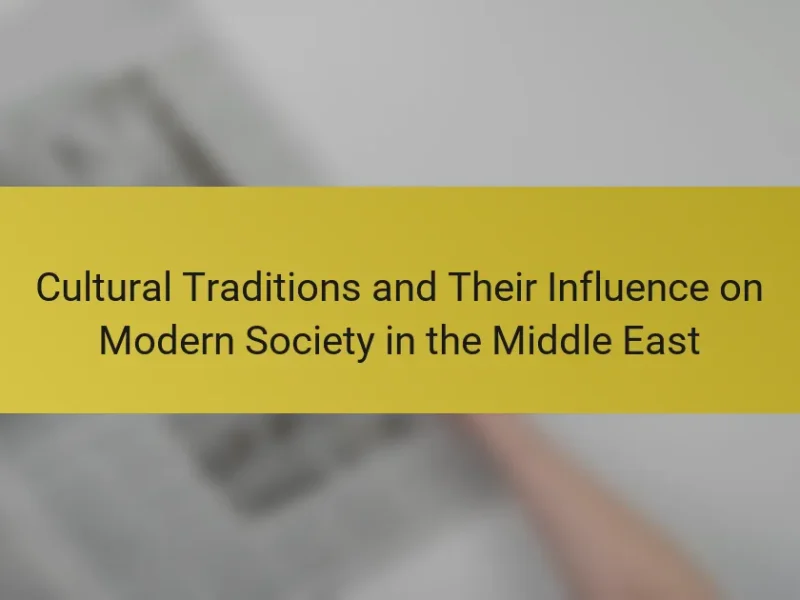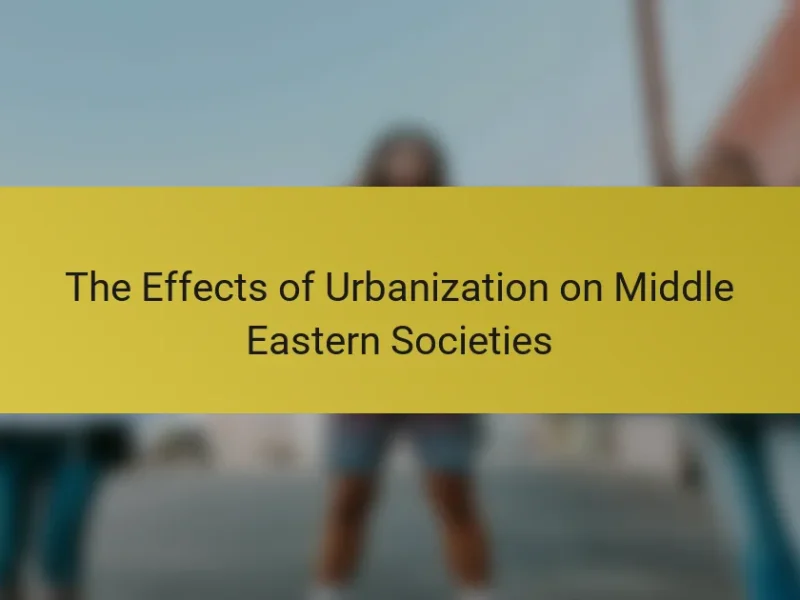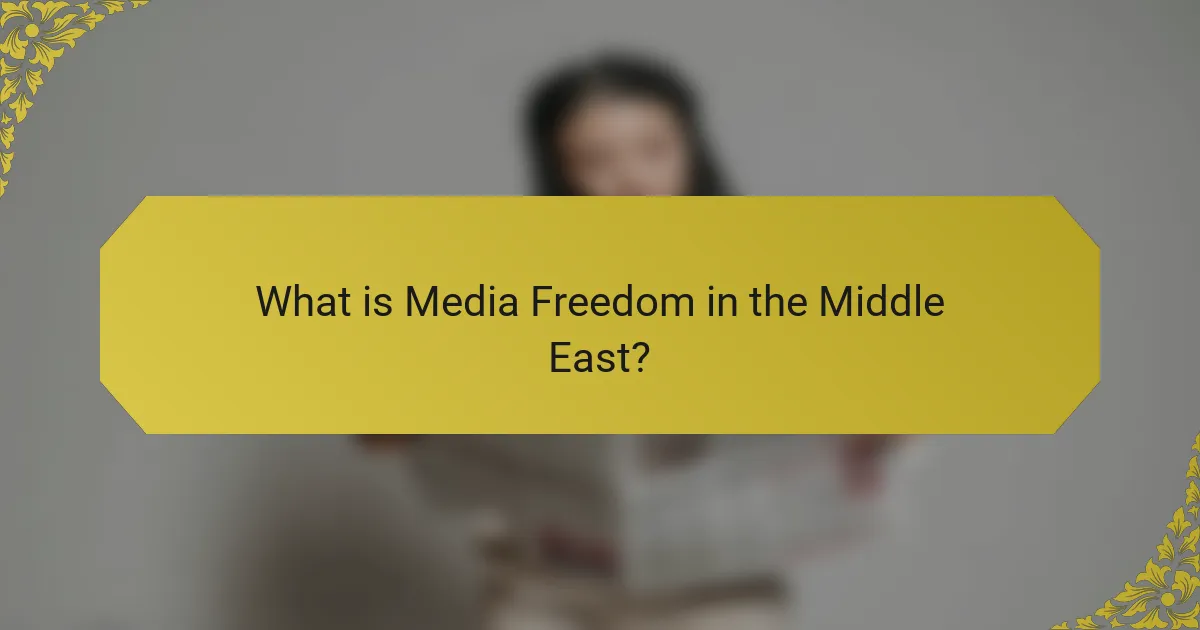
What is Media Freedom in the Middle East?
Media freedom in the Middle East refers to the ability of media organizations and journalists to operate independently without censorship or government interference. This concept varies significantly across the region, with some countries allowing more freedom than others. For instance, nations like Israel have a relatively free press, while countries like Saudi Arabia impose strict controls on media. According to the 2023 World Press Freedom Index, many Middle Eastern countries rank low, indicating limited media freedom. The lack of media freedom can hinder public discourse and restrict access to information. In contrast, countries with higher media freedom often experience more vibrant democratic processes.
How is Media Freedom defined in the context of the Middle East?
Media freedom in the context of the Middle East is defined as the ability of journalists and media outlets to operate independently without government interference. This includes the right to report on political, social, and economic issues freely. In many Middle Eastern countries, media freedom is restricted by laws, censorship, and threats against journalists. For instance, Reporters Without Borders ranks several Middle Eastern nations among the lowest in their World Press Freedom Index. Countries like Saudi Arabia and Iran impose strict controls on media, limiting freedom of expression. Conversely, some nations like Tunisia have made strides towards greater media independence post-revolution. Overall, the state of media freedom varies significantly across the region, impacting public discourse and societal development.
What are the key characteristics of Media Freedom in this region?
Media freedom in this region is characterized by limited press independence, government censorship, and restricted access to information. Many countries in the Middle East impose laws that hinder journalistic expression. Journalists often face threats, harassment, and imprisonment for their work. According to the 2023 World Press Freedom Index, several nations rank low in media freedom. For instance, countries like Syria and Iran have been noted for their oppressive media environments. Additionally, state-controlled media dominates the information landscape, reducing pluralism. Public dissent is often met with severe repercussions, further stifling media freedom. These characteristics highlight the ongoing challenges faced by media professionals in the region.
How does Media Freedom differ across various Middle Eastern countries?
Media freedom varies significantly across Middle Eastern countries. In countries like Saudi Arabia and Iran, media is heavily restricted. Journalists face censorship and severe penalties for dissent. Conversely, nations such as Lebanon and Tunisia enjoy relatively greater press freedoms. In Lebanon, diverse media outlets operate, reflecting multiple viewpoints. Tunisia’s post-revolution environment has fostered a more open media landscape. However, challenges remain, including threats to journalists and political pressures. According to the 2023 World Press Freedom Index, many Middle Eastern nations rank low, indicating systemic issues. This disparity highlights the complex relationship between media freedom and political regimes in the region.
Why is Media Freedom important for society in the Middle East?
Media freedom is crucial for society in the Middle East as it promotes transparency and accountability. It allows citizens to access diverse information and viewpoints. This access fosters informed public discourse and civic engagement. Media freedom can also challenge government corruption and abuses of power. For instance, countries with higher media freedom often report lower levels of corruption. According to the 2021 World Press Freedom Index, nations with free media experience greater political stability. Additionally, media freedom supports human rights by amplifying marginalized voices. This is vital in regions facing authoritarianism and repression. Overall, media freedom empowers citizens and strengthens democratic processes.
What role does Media Freedom play in promoting democracy?
Media freedom is essential for promoting democracy. It enables the dissemination of diverse viewpoints. Free media holds governments accountable and fosters transparency. This accountability is crucial for informed citizen participation. In regions like the Middle East, media freedom can challenge authoritarian regimes. Studies show that countries with greater media freedom experience higher levels of civic engagement. For example, the Arab Spring highlighted the role of social media in mobilizing protests. This illustrates how media can empower citizens to demand democratic reforms.
How does Media Freedom impact public opinion and civic engagement?
Media freedom significantly influences public opinion and civic engagement. It allows diverse viewpoints to be expressed. This diversity fosters informed public discourse. When media is free, citizens access various perspectives on societal issues. This access encourages critical thinking and informed decision-making. Studies show that in regions with high media freedom, civic participation increases. For instance, countries like Tunisia have seen greater public mobilization post-revolution due to enhanced media freedoms. In contrast, restricted media environments often lead to apathy and disengagement. Thus, media freedom is essential for a vibrant civil society and active citizenry.
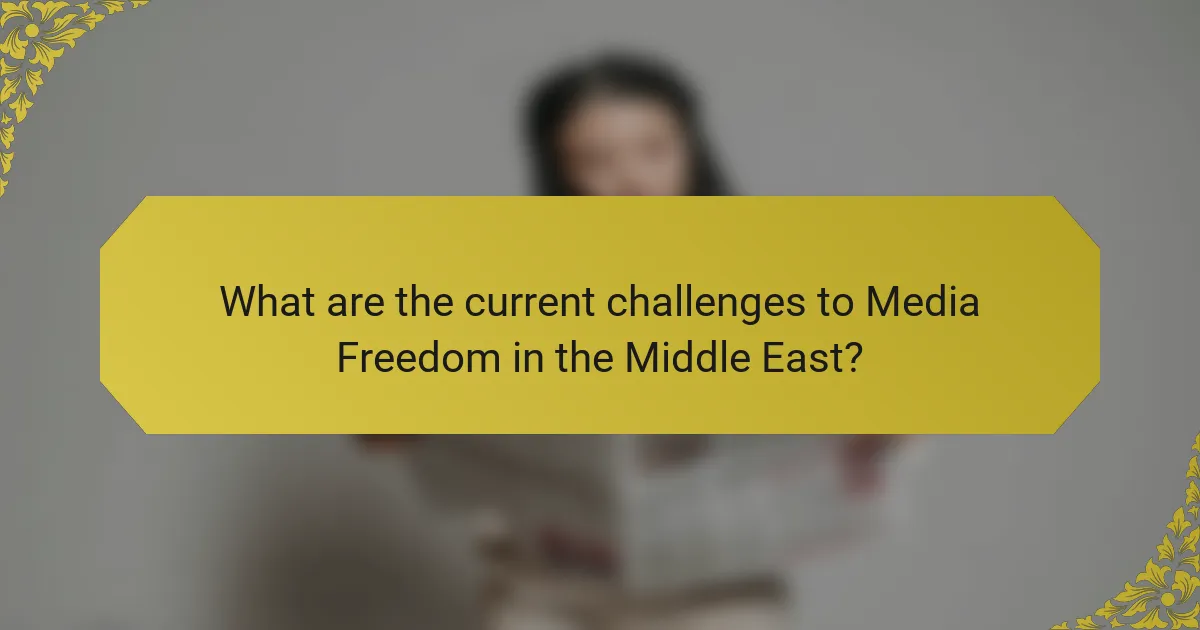
What are the current challenges to Media Freedom in the Middle East?
Current challenges to media freedom in the Middle East include government censorship, violence against journalists, and restrictive laws. Many governments in the region impose strict regulations on media operations. This limits the ability of journalists to report freely. In countries like Egypt and Syria, journalists face harassment and imprisonment. According to the Committee to Protect Journalists, over 100 journalists are currently imprisoned in the region. Additionally, state-controlled media often dominate the narrative, suppressing dissenting voices. The lack of press freedom undermines democratic processes and hinders public discourse. These factors collectively create an environment where media freedom is severely restricted.
What legal and political barriers exist to Media Freedom?
Legal and political barriers to media freedom include restrictive laws, censorship, and government control. Many countries impose laws that limit journalistic expression. These laws often include defamation, sedition, or anti-terrorism statutes. Censorship is prevalent, with governments blocking websites and monitoring communications. In some regions, media outlets face closure for publishing dissenting views. Additionally, state ownership of media creates conflicts of interest. Political pressure can lead to self-censorship among journalists. Reporters may also face harassment or violence for their work. These factors collectively hinder the free flow of information and limit public discourse.
How do government regulations affect journalists and media outlets?
Government regulations significantly impact journalists and media outlets by shaping their operational landscape. Regulations can impose restrictions on content, limiting freedom of expression. For instance, laws may prevent the publication of critical political commentary. Such regulations can lead to self-censorship among journalists, as they fear legal repercussions. Additionally, government oversight can control media ownership, influencing the diversity of viewpoints available to the public. In countries with stringent media laws, outlets may face fines or closure for non-compliance. Historical examples include the Arab Spring, where oppressive regulations stifled independent journalism. Overall, these regulations create a challenging environment for media professionals, ultimately affecting public access to information.
What are the consequences of censorship on media practices?
Censorship significantly restricts media practices by limiting the flow of information. It leads to a lack of diverse viewpoints in public discourse. Journalists may self-censor to avoid repercussions, which stifles creativity and critical thinking. The credibility of media outlets can diminish as audiences become aware of biased reporting. Censorship can also foster an environment of mistrust between the media and the public. According to a 2021 report by Freedom House, countries with high levels of censorship experience lower levels of democratic engagement. In the Middle East, governments often control media narratives to maintain power and suppress dissent. This results in a homogenized media landscape that fails to represent the true complexities of society.
How do social and cultural factors influence Media Freedom?
Social and cultural factors significantly influence media freedom by shaping public perceptions and government policies. Societies with strong cultural norms may impose restrictions on content that contradicts these values. For instance, in regions where religious beliefs are paramount, media content may be censored to align with those beliefs. Additionally, social movements can either promote or hinder media freedom. Countries experiencing democratic movements often see an increase in media freedom. Conversely, authoritarian regimes may tighten controls in response to social unrest. Historical examples include the Arab Spring, where social movements led to greater media expression in some countries. Thus, social and cultural contexts directly impact the operational landscape of media freedom.
What role does public perception play in shaping Media Freedom?
Public perception significantly influences media freedom. It shapes how media outlets operate and the extent of their independence. A supportive public can lead to greater media freedom. Conversely, negative public perception may result in censorship or restrictions. For instance, in countries where citizens value press freedom, media often operate with fewer limitations. Research indicates that public opinion can drive policy changes regarding media regulations. In the Middle East, public perception is crucial due to varying levels of government control over media. Thus, public sentiment directly impacts the landscape of media freedom in the region.
How do cultural norms impact the reporting of sensitive topics?
Cultural norms significantly influence the reporting of sensitive topics. These norms dictate acceptable discourse and can lead to self-censorship among journalists. For instance, in many Middle Eastern societies, discussing issues like gender equality or political dissent is often taboo. This cultural sensitivity can result in journalists avoiding these topics altogether. Moreover, cultural expectations may pressure media outlets to conform to prevailing social attitudes. Research indicates that in conservative cultures, the fear of backlash can lead to a lack of comprehensive coverage on critical issues. Consequently, this affects public awareness and discourse, limiting the diversity of perspectives presented in the media.
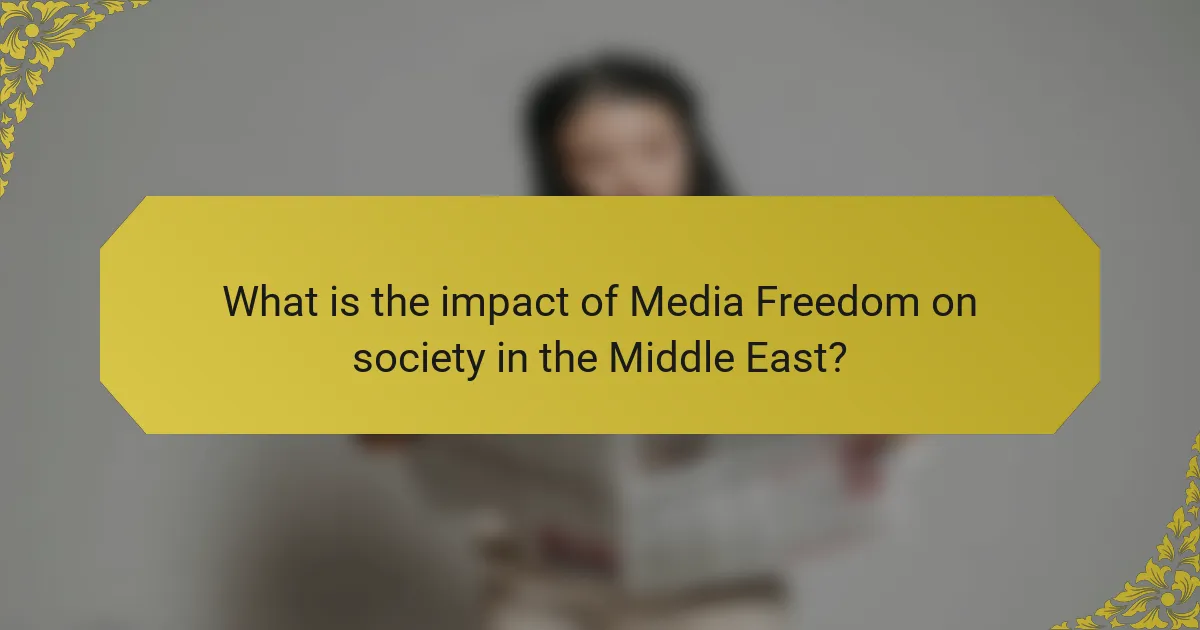
What is the impact of Media Freedom on society in the Middle East?
Media freedom significantly impacts society in the Middle East by promoting transparency and accountability. It enables citizens to access diverse viewpoints and fosters informed public discourse. Increased media freedom can lead to greater government scrutiny and reduced corruption. For instance, countries with more liberal media environments often experience enhanced civic engagement. Research indicates that media freedom correlates with improved democratic practices. According to the 2021 World Press Freedom Index, several Middle Eastern countries rank low, indicating restricted media environments. In contrast, nations with higher media freedom scores tend to enjoy more stable societies. Thus, media freedom plays a crucial role in shaping the political and social landscape in the region.
How does Media Freedom contribute to social change?
Media freedom contributes to social change by enabling open dialogue and the dissemination of diverse viewpoints. It empowers citizens to express their opinions and challenge the status quo. This fosters accountability among governments and institutions. For instance, in the Arab Spring, social media played a crucial role in mobilizing protests. Reports indicate that platforms like Twitter and Facebook facilitated real-time communication. This led to increased awareness of social injustices and human rights violations. Furthermore, media freedom encourages investigative journalism, which exposes corruption and promotes transparency. Studies show that countries with higher media freedom tend to have more robust democratic processes. Thus, media freedom is essential for driving social change and fostering an informed society.
What examples exist of Media Freedom leading to social movements?
Media freedom has led to significant social movements in various contexts. One prominent example is the Arab Spring, which began in 2010. Social media platforms played a crucial role in organizing protests across multiple countries. In Tunisia, the self-immolation of Mohamed Bouazizi sparked widespread demonstrations. These protests were fueled by the rapid dissemination of information through social media.
Another example is the 2019 Sudanese protests. Activists used social media to mobilize citizens against the government. The media coverage helped raise international awareness and support for the movement. In both cases, media freedom allowed for the sharing of dissenting views and mobilization of collective action.
In Iran, the Green Movement of 2009 utilized social media to challenge election results. Despite government censorship, activists shared information online, garnering global attention. These instances illustrate how media freedom can empower citizens to initiate social change.
How does Media Freedom affect the dissemination of information during crises?
Media freedom significantly enhances the dissemination of information during crises. It allows for a diverse range of voices and perspectives to be shared. When media operates freely, it can report on events without censorship. This leads to more accurate and timely information being available to the public. For instance, during the Arab Spring, independent media outlets provided crucial updates that shaped public response. Furthermore, studies show that countries with higher media freedom tend to have better-informed populations during emergencies. This access to information can help communities respond effectively to crises.
What are the economic implications of Media Freedom?
Media freedom can significantly impact economic growth and development. It fosters an environment conducive to innovation and entrepreneurship. Open media promotes transparency, which reduces corruption and attracts foreign investment. Countries with higher media freedom tend to experience better economic performance. For instance, the World Press Freedom Index shows a correlation between media freedom and GDP growth rates. Additionally, media freedom supports informed consumer choices, driving competition and improving market efficiency. In contrast, restricted media can hinder economic progress by limiting access to information. This is evident in regions where censorship stifles business opportunities and economic diversification.
How does Media Freedom influence the advertising and media industry?
Media freedom significantly influences the advertising and media industry by fostering a competitive environment. A free media landscape allows diverse viewpoints, encouraging creativity in advertising. This diversity attracts advertisers seeking to engage with various demographics. In contrast, restrictive media environments limit expression and reduce the range of advertising options. For instance, in countries with high media freedom, advertising expenditures tend to increase, as seen in the 2021 report by Statista, which noted a 10% rise in ad spending in such regions. Furthermore, media freedom enhances consumer trust, leading to higher engagement rates with advertisements. Overall, the relationship between media freedom and the advertising industry is evident in the growth and innovation seen in more open markets.
What are the effects of Media Freedom on foreign investment in the region?
Media freedom positively influences foreign investment in the region. It enhances transparency and fosters a stable business environment. Investors prefer regions with open media as it indicates lower corruption levels. Countries with media freedom often attract more foreign direct investment (FDI). For example, a 2019 report by the World Bank showed a correlation between media freedom and increased FDI inflows. Additionally, free media supports informed public discourse, which can lead to better governance. This, in turn, creates a favorable climate for investors. Overall, media freedom acts as a catalyst for economic growth through enhanced foreign investment.
What best practices can be adopted to enhance Media Freedom in the Middle East?
Promoting legal protections for journalists enhances media freedom in the Middle East. Establishing laws that safeguard against censorship and harassment is crucial. Training programs for journalists on ethical reporting and legal rights can empower them. Encouraging independent media ownership reduces government control. International partnerships can provide support and resources for local media. Increasing public awareness about the importance of media freedom fosters a supportive environment. Lastly, advocating for transparency in government actions builds trust in media institutions. These practices collectively strengthen the media landscape in the region.
How can journalists navigate challenges to ensure ethical reporting?
Journalists can navigate challenges to ensure ethical reporting by adhering to established ethical guidelines. They should prioritize accuracy, verifying facts before publication. Transparency is crucial; journalists must disclose their sources when possible. Maintaining independence from external pressures is essential for unbiased reporting. They should also engage in continuous education on ethical standards and local laws. Collaboration with other journalists can provide support and diverse perspectives. Regular reflection on their reporting practices helps identify and correct biases. Finally, they should be open to feedback from audiences to improve accountability.
What role can international organizations play in supporting Media Freedom?
International organizations can play a significant role in supporting media freedom. They can provide funding and resources to independent media outlets. This support enhances the capacity of these outlets to operate without government interference. Additionally, international organizations can advocate for legal reforms that protect journalists and media workers. They can also monitor and report on violations of media freedom globally. Reports from organizations like Reporters Without Borders highlight the importance of their advocacy. Furthermore, they can facilitate training programs for journalists to improve their skills. By promoting international standards for press freedom, these organizations help create a safer environment for media professionals.
Media freedom in the Middle East refers to the independence of media organizations and journalists from government censorship and interference, which varies significantly across the region. The article explores the definition of media freedom, its key characteristics, and the differences among various countries, highlighting the challenges posed by restrictive laws and government controls. It emphasizes the importance of media freedom for societal transparency, accountability, and democratic processes, while also discussing its impact on public opinion, civic engagement, and economic growth. Furthermore, the article outlines best practices for enhancing media freedom and the role of international organizations in supporting journalists and independent media.
